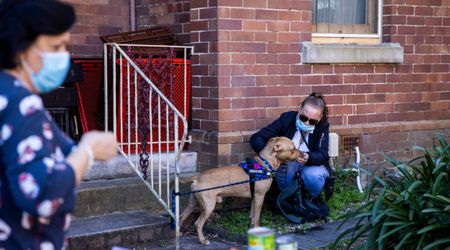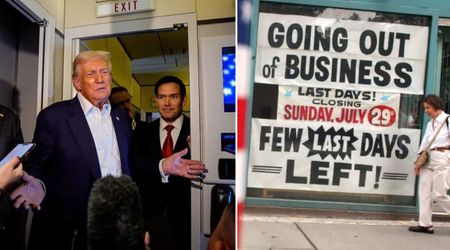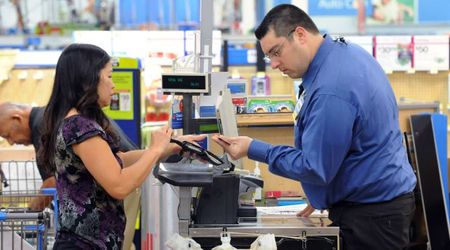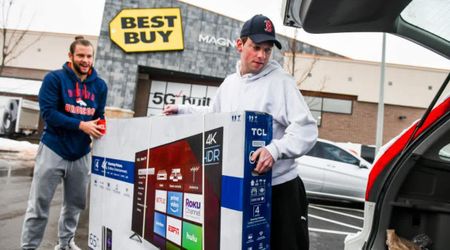Billions in COVID-19 Relief Aid Taken Away by Fraudsters

In the wake of the COVID-19 pandemic, the U.S. government swiftly allocated trillions of dollars in relief aid to support struggling businesses and unemployed individuals. However, what was meant to be a lifeline for Americans in need became a breeding ground for an alarming wave of fraud and mismanagement. An in-depth analysis reveals the shocking extent of the grift, with fraudsters potentially stealing over $280 billion, representing a staggering 10% of the $4.2 trillion in COVID-19 relief funds disbursed by the U.S. government. An additional $123 billion was wasted or misspent, exacerbating the financial burden on taxpayers.

COVID-19 Relief Fraud
The scale of the scam is nothing short of astonishing. Criminals resorted to various tactics to exploit relief programs, exposing glaring vulnerabilities in the system. They used the Social Security numbers of deceased individuals and even federal prisoners to access unemployment checks. Some cheaters collected benefits in multiple states, further complicating the task of authorities. Shockingly, the exploitation of these programs was not limited to organized crime rings but also included individuals such as a U.S. soldier in Georgia, pastors of a defunct church in Texas, a former state lawmaker in Missouri, and a roofing contractor in Montana.
Government oversight failures
The ease with which individuals could access relief funds led to a disturbing perception that fraudulent activities were somehow socially acceptable. The rapid deployment of trillions in relief aid during the early stages of the pandemic resulted in insufficient oversight and inadequate restrictions on applicants. The rush to provide much-needed assistance inadvertently created an environment ripe for exploitation.
Legal action against COVID-19 relief fraudsters
As a response to this rampant fraud, the U.S. government has initiated legal actions against more than 2,230 defendants involved in pandemic-related fraud crimes. Thousands of investigations are still underway as authorities delve deeper into potential schemes.

Programs under scrutiny
Most of the pilfered funds were siphoned from three major pandemic-relief initiatives launched during the Trump administration and inherited by President Joe Biden. These programs aimed to assist small businesses and unemployed workers facing the economic fallout of the pandemic. The cases that captured headlines involved massive sums, but the underlying issue was a systemic problem of scams and swindles. All these instances underscored the challenges faced by a nation grappling with overrun hospitals, school closures, and shuttered businesses while more than 1.13 million Americans succumbed to COVID-19.
Challenges for investigators
The task of quantifying the exact amount of fraud and mismanagement presents numerous challenges. Estimates have ranged from tens of billions to potentially exceeding $100 billion. The overwhelming workload faced by federal agencies responsible for investigations and audits is striking, with a backlog of more than 80,000 actionable leads – nearly a century's worth of work.

Measures taken to prevent more losses
In response to the alarming extent of pandemic relief fraud, the Biden administration has implemented stricter rules to prevent further losses. One key measure is the use of the "Do Not Pay" Treasury Department database to prevent government funds from going to debarred contractors, fugitives, felons, or individuals convicted of tax fraud. Additionally, the administration has proposed a $1.6 billion plan to bolster law enforcement efforts to apprehend pandemic relief fraudsters.
COVID-19 impact on the U.S. Economy
The impact of the Great Grift on the economy cannot be understated. COVID-19 thrust the U.S. economy into a short but devastating recession, with jobless rates soaring into double digits. To combat this economic upheaval, Washington allocated hundreds of billions of dollars to states to help the suddenly unemployed. However, this influx of government funds inadvertently created an opportunity for fraudsters. State unemployment agencies, already overwhelmed by the surge in demand, struggled to cope with outdated computer systems and limited staff. The result was a massive wave of fraudulent claims that, to date, have cost the government $76 billion in confirmed fraud and an additional $115 billion in benefits mistakenly disbursed to individuals who should not have received them.

Challenges faced by state agencies
Brent Parton, acting assistant secretary of the U.S. Labor Department's Employment and Training Administration, explained that state agencies faced an unprecedented demand for unemployment benefits, which they were ill-equipped to handle. Their systems were underfunded, lacked resilience, and were vulnerable to sophisticated attacks by fraudsters.
Ohio State Auditor Keith Faber pointed out that safeguards to ensure that unemployment aid only went to those who legitimately qualified were lowered. The state's unemployment agency found itself inundated with a year's worth of claims in just a few weeks. Additionally, the federal government directed states to expedite fund disbursement with less emphasis on security, a decision that ultimately contributed to the massive losses.
The pandemic unemployment assistance programs
Fraud in pandemic unemployment assistance programs stands at $76 billion, according to congressional testimony from Labor Department Inspector General Larry Turner. This estimate is considered conservative, and an additional $115 billion was mistakenly paid to ineligible recipients.

One significant challenge in identifying all instances of pandemic unemployment insurance fraud has been the lack of cooperation from the federal Bureau of Prisons. Scam artists used Social Security numbers of federal prisoners to steal millions of dollars in benefits. However, the exact amount stolen through this method remains unknown because the prison bureau has declined to provide current data about federal prisoners.
The path forward
As investigations into the Great Grift continue, a pressing question arises: how can authorities ensure that justice is served and that the stolen funds are recovered? The government has taken measures to extend the statute of limitations on crimes related to the major relief programs managed by the Small Business Administration (SBA). This extension from five to ten years will provide federal prosecutors with additional time to untangle pandemic fraud cases, many of which involve identity theft and criminals located overseas.
In August, President Biden signed legislation to increase the statute of limitations, a rare instance of bipartisan agreement, allowing prosecutors more time to bring fraudsters to justice. However, no guarantee exists that all individuals who seized the opportunity for an easy payday will face legal consequences. Prosecutors are burdened with numerous cases unrelated to pandemic relief funds, and the backlog of leads remains substantial.
While the pandemic may be waning and hospitalizations are on the decline, the economic fallout and the memory of the Great Grift remain. On Capitol Hill, lawmakers are engaged in a fierce debate over the success of the relief spending and who should be held accountable for the theft. Republicans argue that excessive government spending leads to fraud, waste, and inflation, while Democrats emphasize that the financial support from Washington saved lives, businesses, and jobs.
To address the ongoing challenges, the GOP-led House Oversight and Accountability Committee is actively investigating pandemic relief spending. Its chairman, Rep. James Comer of Kentucky, has called for a comprehensive examination of where the money went, how much ended up in the hands of fraudsters or ineligible participants, and what measures should be implemented to prevent such incidents in the future.
Preventing Future Grift
As the nation reflects on the lessons learned from the Great Grift, the key challenge is to strike a balance between providing swift assistance to those in need and safeguarding against fraudulent activities. Gene Sperling, the White House American Rescue Plan coordinator, emphasizes that in a crisis, it is possible to focus on fast delivery to people in desperate situations without compromising anti-fraud measures. Sperling's assertion that it's not necessary to choose between helping those in need and stopping fraudsters provides a glimmer of hope.






















